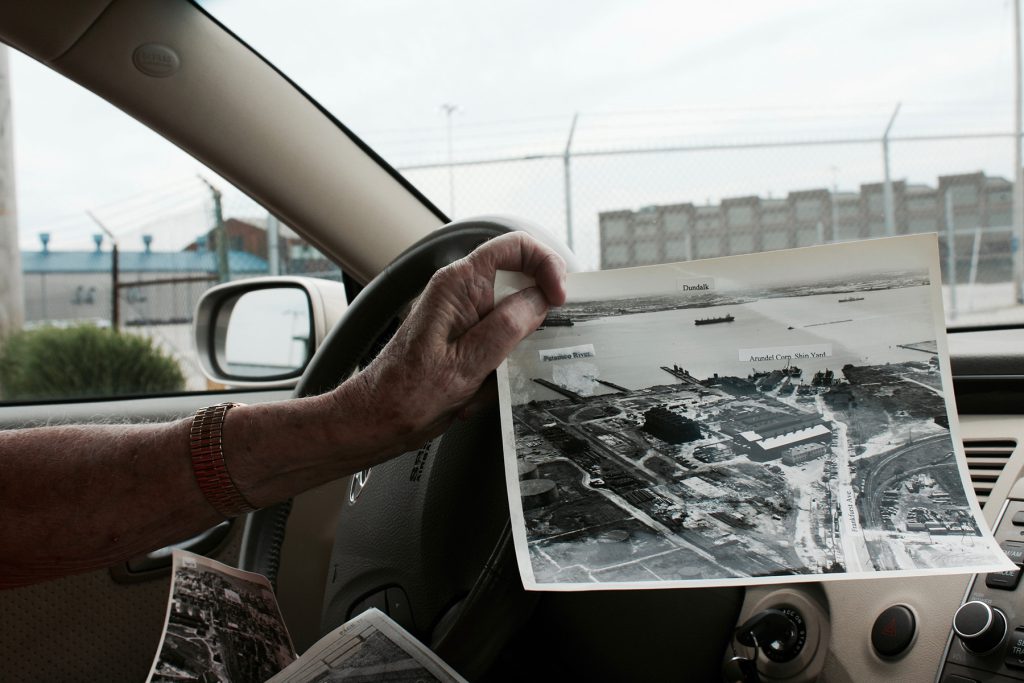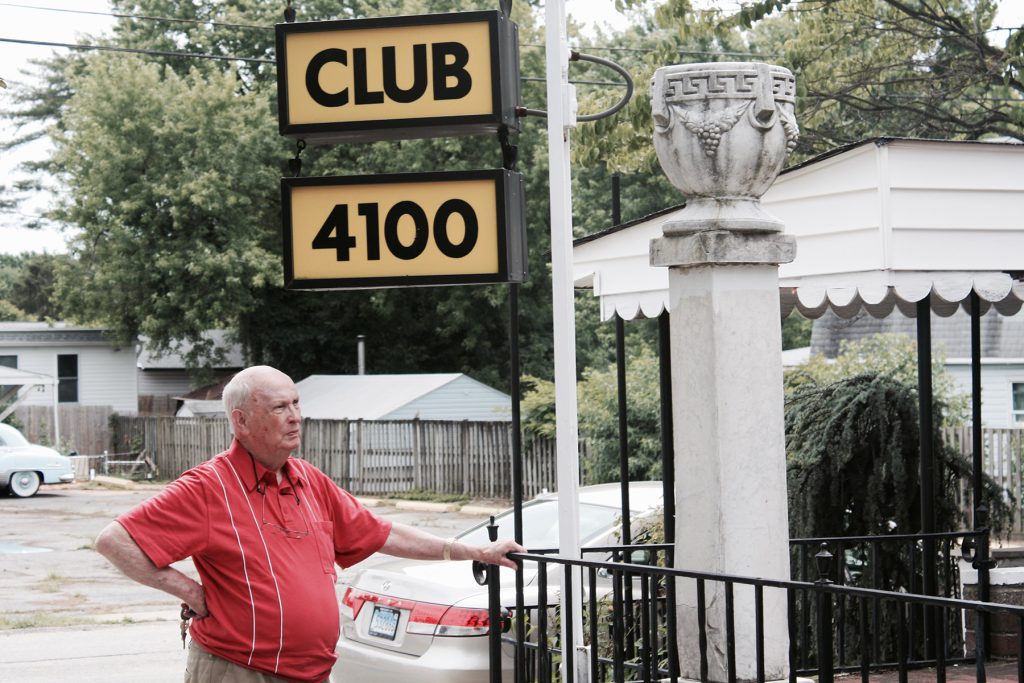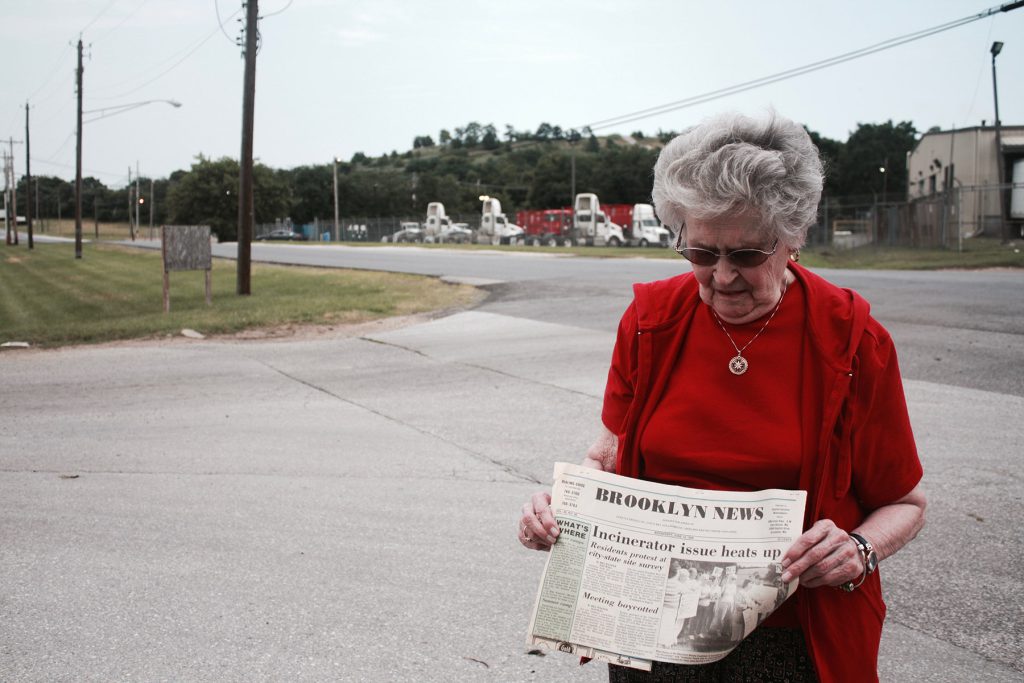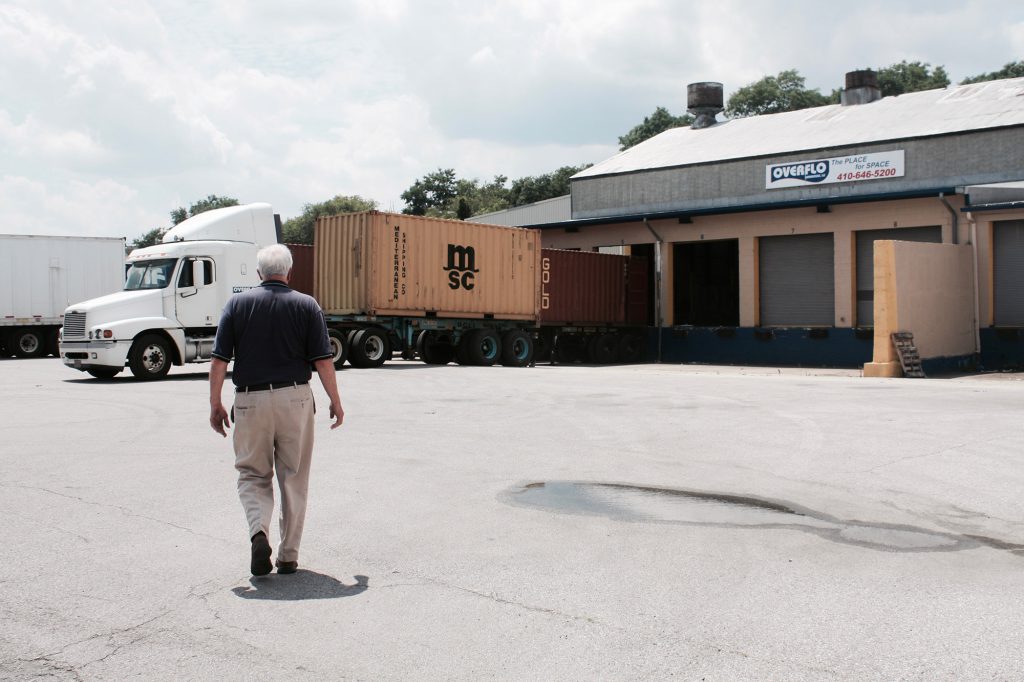America’s Postindustrial Futures
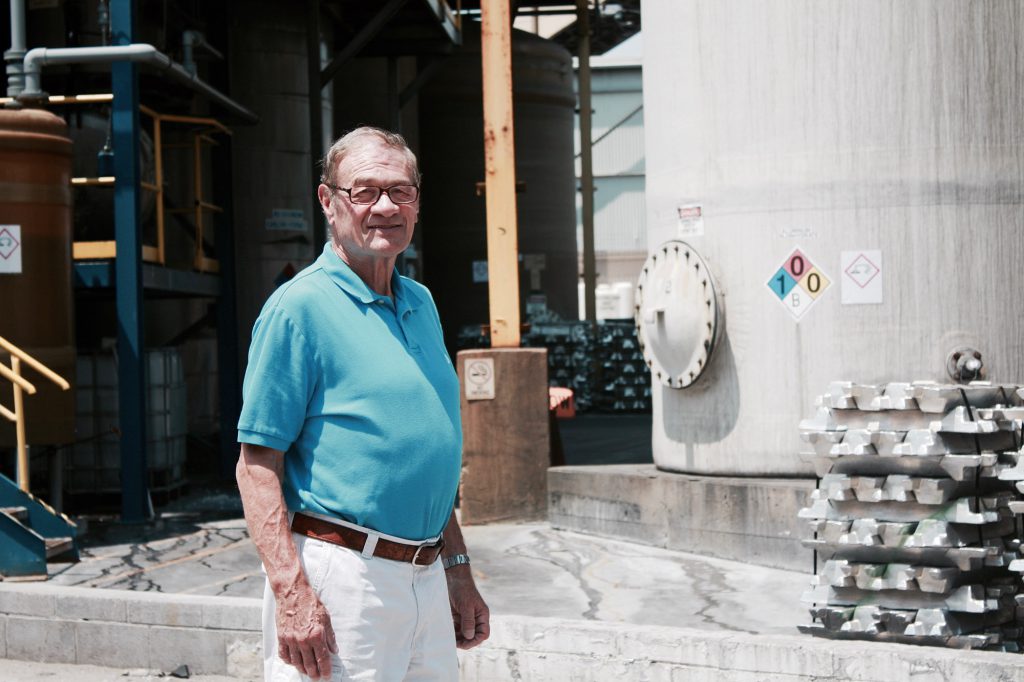
In 1963, Frank was fired from his job at American Dredging. A few years later, he was laid off from Bethlehem Steel. [1] [1] All names in this piece (other than the author’s) are pseudonyms. Then he tried his hand as a pipefitter, a concrete pourer, a brick maker, and a chemical mixer at various other companies in Baltimore, Maryland, before being pushed into early retirement in 2003. When we sat down in 2016 to talk about his employment history, Frank counted: He had been hired and fired from seven different manufacturing jobs in the 1990s alone. And he considers himself “one of the lucky ones.” He receives a modest pension from the job where he “ended”—GEO Specialty Chemicals—and he still has his health intact, mostly.
Stories like Frank’s are not uncommon in postindustrial towns across the United States. In Baltimore, I hear them all the time from former factory workers frustrated with the “decay” of their once-prosperous city. Years ago, Baltimore was a hub for fertilizer, steel, and petrochemical businesses. But the post-WWII period brought major economic shifts, and the city lost some 100,000 jobs during the second half of the 20th century. (And if the Baltimore-area General Motors plant is closed as part of the company’s massive restructuring, announced this week, there will be another 300 or more unemployed people in the region.) Those who remain in the city blame a variety of people for their fate: greedy executives, overzealous regulators, and foreign workers all take the heat for the decline of American industry. They also come up when former factory workers talk about “falling from grace” or pass through abandoned lots that were once brimming with activity.
The current U.S. administration’s controversial “America First” platform is designed to tap into precisely these frustrations. It offers a deceptively straightforward solution to the maddeningly complex interplay between global disparities in labor cost, the United States’ shift to a service and information economy, and the rise of international free trade agreements. In the face of such broad and impersonal forces, the policy relies on a comforting simplicity. It offers a wholesale renewal of the past—making America “great again”—as the only acceptable future for the country’s postindustrial communities.
Yet, in my work as an anthropologist in postindustrial Baltimore over the past eight years, I’ve met people who were not so sure the industrial past was “great.” And even some of those who did long for an industrial revival felt less confident about the future of American factory towns than the president seems to be.
In the months leading up to the 2016 U.S. presidential election, I took photos of dozens of workers in the largely deserted spaces where they used to earn a living. We spent time talking about the various forces that led to factory closures and the experience of inhabiting what many call a “forgotten” part of the city.
Most of the people I spoke with miss the sense of purpose they derived from their work and the camaraderie they felt in the factory. Frank, for one, told me that he pines for every job he had. He’d like to see a revival of domestic manufacturing. But not everyone in Baltimore envisions an industrial rebirth. Some don’t even want one. In fact, many former factory workers in the city have fraught relationships with the idea of American industry.
When I first met Arthur in 2015, he was 84 years old. He used to drive me around south Baltimore in his light-brown Oldsmobile. We’d pass expansive warehouses, sprawling landfills, and the shells of former businesses—a bar that used to serve shift workers, a repair shop that fixed factory machines. Until the 1970s and ’80s, this area was bustling with activity. Today it’s full of “passive industry.” That was Arthur’s term for businesses, like warehouses, that move goods and profits through south Baltimore without creating jobs. He told me that he misses “the way things used to be.”
Arthur was one of the people I met who would do almost anything to bring back stable factory work. His father had been a long-term employee at a local gravel business, and his sister had worked for an electric company. Even though Arthur and his children had all earned satisfactory incomes working in the plants, his grandchildren now face a radically different landscape of opportunity: Baltimore has been hemorrhaging middle-class jobs for decades and replacing them with low-wage work in the service economy. (Today people are far more likely to buss tables or clean hotel rooms than they are to “make” anything.) Arthur admitted that the causes of this shift are complex, but he asserted that its effects are clear: Workers have a harder time making ends meet.
According to a local union representative, factory jobs could bring in some US$70,000 a year plus benefits. In comparison, the minimum hourly wage is piddling: The current minimum wage in Baltimore is officially US$10.10 an hour, which, for full-time work, would yield an annual salary well below the poverty line. Yet even such hourly work is scarce in south Baltimore, which leaves many to labor illegally. That’s why some residents, including Arthur, draw a direct connection between industrial decline and the drug and sex trade that now overwhelms his part of the city.
When I spoke with him, Arthur said he supports policies that aim to bring back factory work. But in his eyes, there were, at the time, at least two far more likely futures for south Baltimore than an industrial revival: It might get bought up by private developers or become a space for trash burning. He placed his bets on the former. “I imagine you’ll see most of the waterfront turn residential,” he said. “Those plants are sitting on prime real estate.” Arthur was pretty sure that luxury waterfront properties, if they ever came to be, would outprice the blue-collar workers who “built” the community.
Minnie was Arthur’s age when I first interviewed her, but despite being of his generation, she didn’t share his attachment to the plants. “They should just bulldoze the whole thing,” she said, sighing. She scorned boarded-up row houses and “unsavory” residents, like Arthur did, but she also wanted to see the end of both Baltimore’s working and abandoned factories. In their place, she longed for “something nice or nothing.” I asked her, “Not jobs?” She replied, “Not these.”
Minnie moved to south Baltimore during WWII after a harrowing journey out of occupied Yugoslavia. Like many residents, she both resented the thick, black debris associated with industrial production and relied on a factory wage to eat. For decades, this double bind meant that residents bit their tongues when there were accidents at the plants or when employees were tasked with dangerous work and managers failed to protect their safety.
When asked about the industrial past, Minnie remembered explosions, chemical clouds, and oil leaks. She mentioned her persistent cough. And she counted the cancer cases in her family. Her husband, a longtime environmental agitator in south Baltimore, died after being struck by four different cancers. One was an oral cancer—as Minnie put it, a “smoker’s disease. … The doctor wouldn’t believe he’d never smoked a cigarette in his life,” at least until he found out that the couple lived next to a chemical company.
Minnie hated seeing what economic decline had done to her former home. “It’s disgraceful,” she said to me. And she didn’t approve of the “low-class people” who live in the community. But she noted that when she hears her peers express nostalgia for factory jobs, she gets irritated. “People pretend like we lived in a nice neighborhood. It wasn’t true,” she insisted. “Life then was not so easy.”
Bill, like Minnie, remembered factory life as being rough. He’d often regale me with astonishing stories about regulatory lapses at the petroleum plant where he worked for years. His father had handed his job to him, he said. “That was all he knew, and he passed it on to me.”
For Bill, factory work was marked by incidents. Sometimes a worker would fall asleep at the pressure gauge after a 40-hour shift and tanks would blow up. More often than not, he said, employees would skip precautionary steps when filling tanker trucks in an effort to improve efficiency. He claimed the plant was always leaking subpar oil into the surrounding bay. “Older guys like my father would never have spoken about that stuff—their jobs were too important,” he explained to me.
When an “efficiency expert” came in to “weed out probably three-quarters of the workers,” Bill said, he was let go. “They got rid of us overnight, it seemed.” After that, he hopped from company to company—so did a lot of his friends. “It really killed a lot of spirits. It made a lot of drug addicts, and it did a lot of other worse things.” I’ve been told that suicides were not infrequent.
Yet as much as Bill resented the plants, he said he has trouble imagining anything better for south Baltimore. Factory jobs, as rough as they were, were Bill’s whole life—and to him, they reflected a nobility not found among the newer businesses in his part of the city. As we walked through Overflo, a storage and distribution warehouse that bills itself as “The Place for Space,” Bill lamented that the company is “making nothing and doing nothing but collecting stuff that no one needs.” Like many of the people I met, Bill was simultaneously critical and nostalgic—and deeply unsure of how to make a life that does not depend on industry.
Together, these workers paint a portrait of deep ambivalence about the current economic moment. They also offer a diverse set of reflections on what the future of postindustrial spaces ought to be. These futures are not informed by a callow adherence to the presidential mantra of “making America great again.” Rather, they are shaped by joy, regret, despair, and sometimes reluctant acceptance—by the many ambiguous feelings that come from real, complex experiences.
Postindustrial America is profoundly unresolved: No one can be sure what changes time will bring. But the United States will be ill-equipped to make these places “great” if their complexity goes unseen.

























